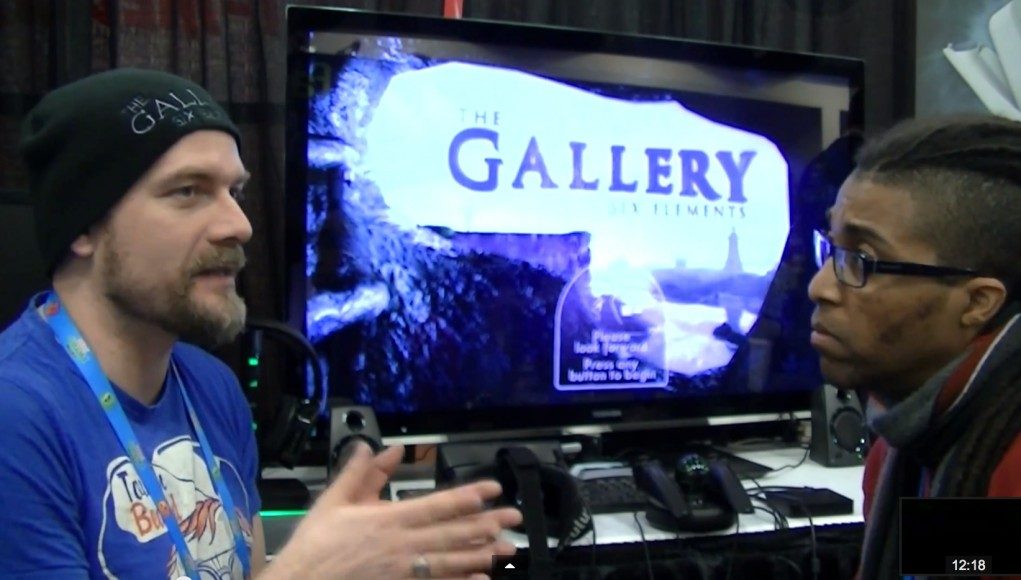The Gallery: Six Elements from Cloudhead Games was among the first titles intended for VR from its roots, with development of the title starting shortly after the Oculus Rift Kickstarter. Since that time, the devs at Cloudhead have been busy building an immersive experience that makes full use of both a VR headset and 3d motion controls. The alpha releases from Cloudhead (Air World and Exploration School) have been promising, so I was naturally excited to hear about a new demo being shown at GDC.

A section of the Sixense booth was dedicated to TG:SE, manned by none other than the game’s Creative Director and President of Cloudhead Games Denny Unger. I got the chance to sit down with Denny to discuss some of the changes that have been made to the game, then proceeded to dive into the new demo armed with a Razer Hydra and a Rift DK1.
Cloudhead has come up with several interesting solutions for player locomotion in VR. Denny stated that a major problem for many VR neophytes involves basic movement; walk speed, rotation speed, body position relative to look, and rotation duration all influence a player’s comfort level. In order to address these issues, they developed a VR “comfort mode,” a combination of systems that depend on player action.
For example, if the player is standing still they are in “tank mode,” where the torso stays in place. In tank mode the player is free to look around, and they have full control of their avatar’s arms. Things change up once the player starts moving. The arms transition into a walking animation, and the player is able to slightly skew the walk direction by looking. The most radical change to the movement system is how the player turns. The right analog stick controls a rapid snap rotation, which turns the body and the camera about 30 degrees. This may sound complex – and a little bit crazy – but this solution felt very comfortable and has reaped much positive feedback in play tests. Denny explained that people react much better when they can reliably predict the amount of rotation they will get from their controller input. I found the solution fascinating, and was pleasantly surprised at its effectiveness. Denny was clear to communicate that these changes would be an option – if you treasure free rotation and controlling the arms while you walk, you have nothing to fear.
The demo itself was an excerpt from the planned opening for the game, providing a seaside cave for the player to explore while they are given contextual hints about game mechanics. The environment was soothing and quite beautiful, featuring some nice lighting effects and water droplets that splash on your face when looking up at a waterfall. A subtle but impressive addition to the visuals was an emulated depth of field effect, where the background blurs slightly when bringing an object close to your face.
Of course, I asked Denny when we could expect to see this demo available for download for the public. The current build was just for GDC, but he hopes to have a public facing demo available soon. It is clear that this experience is being carefully crafted for VR. The stellar sound, lush visuals, and solid controls only serve to heighten anticipation for this title’s release.







